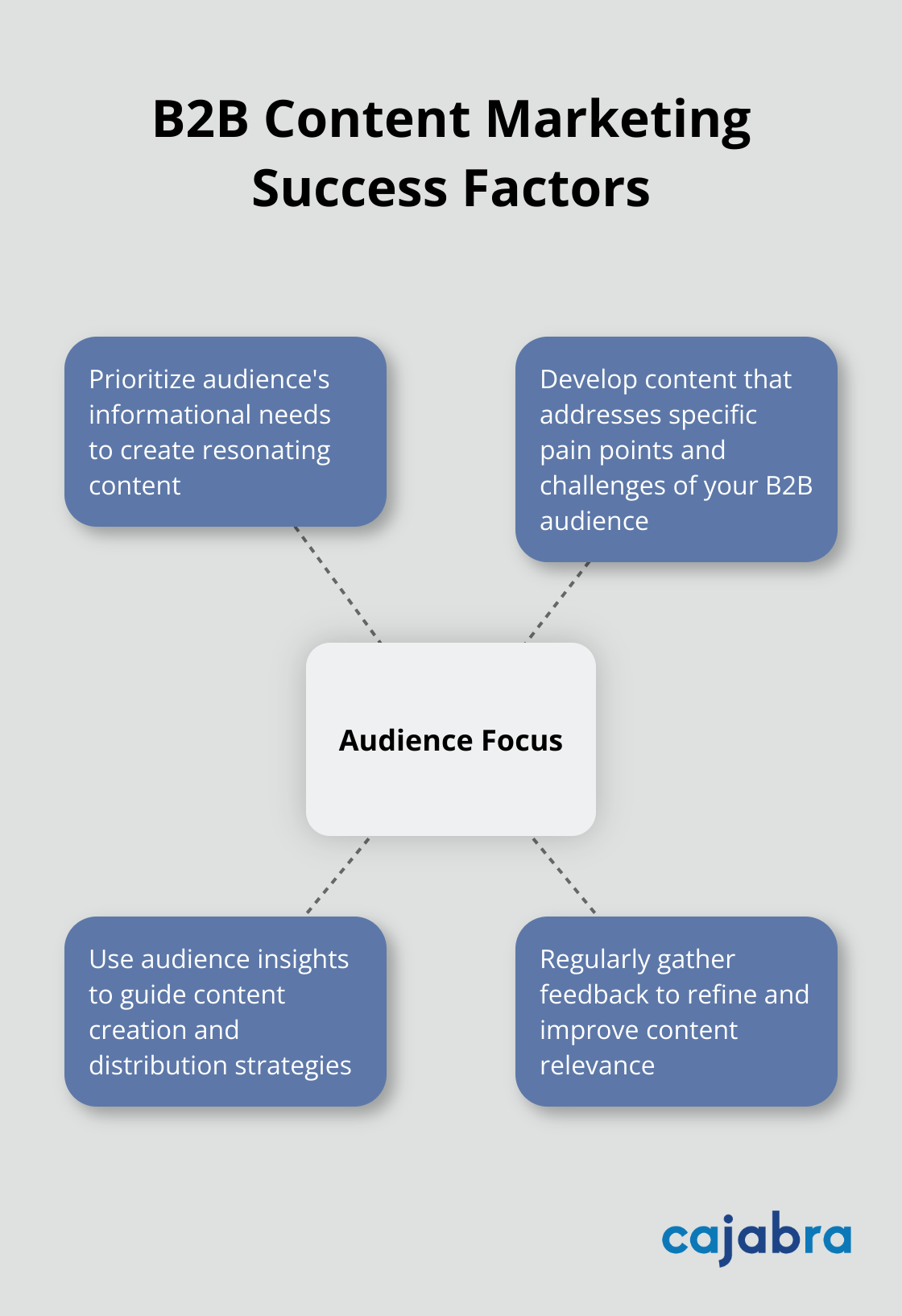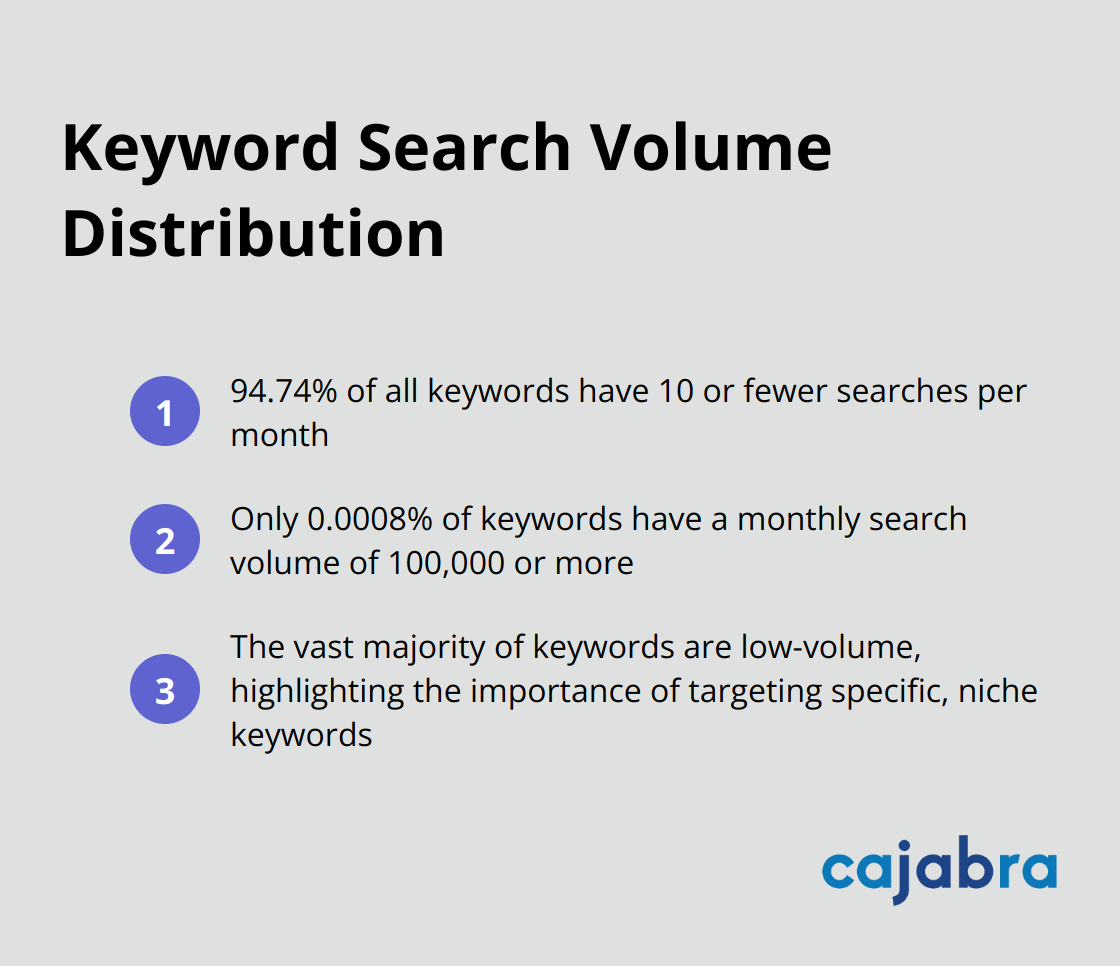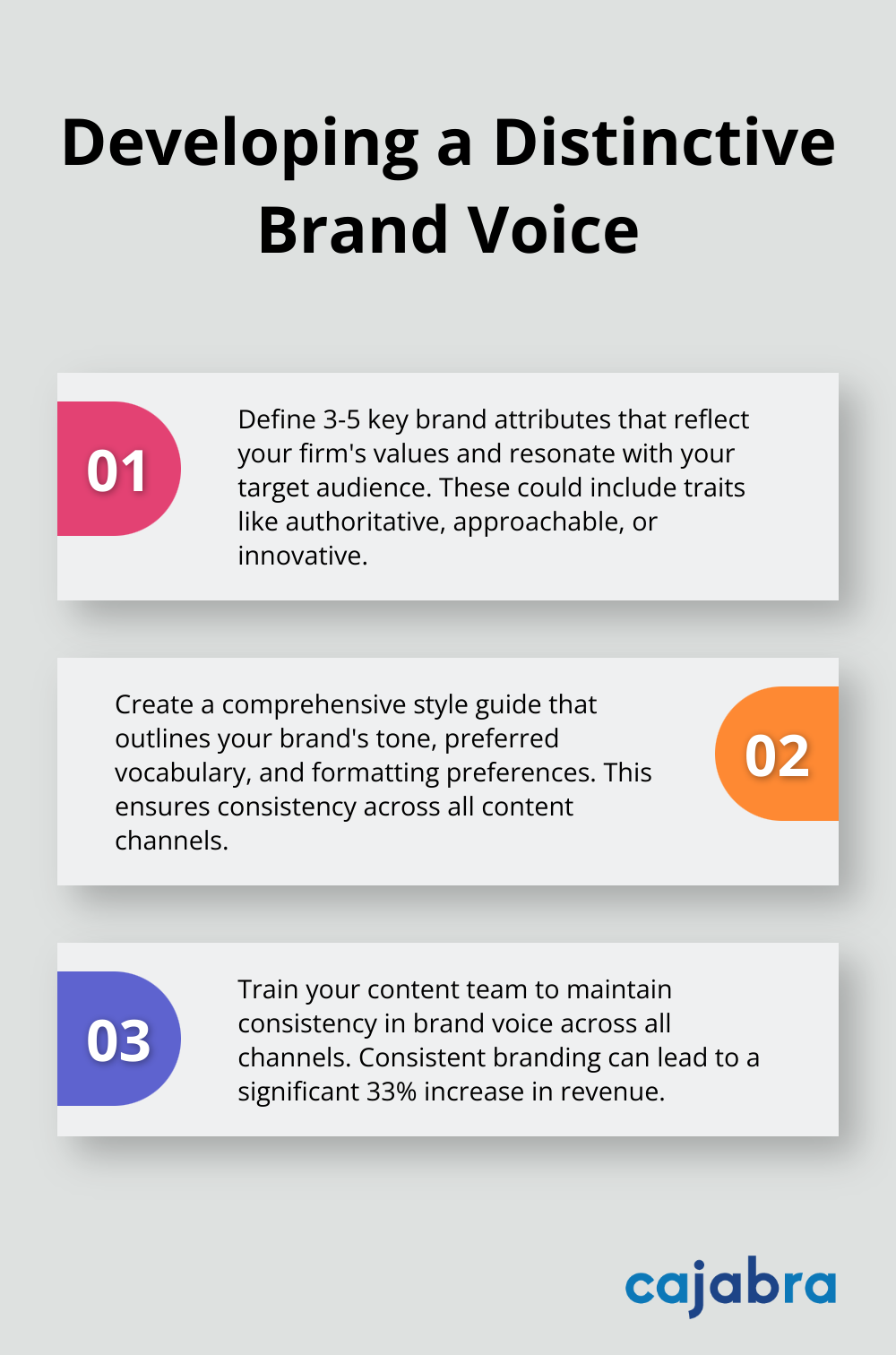
At Cajabra, LLC, we know that creating content without a plan is like shooting in the dark.
A monthly content plan is the compass that guides your content strategy, ensuring every piece aligns with your goals and resonates with your audience.
In this post, we'll walk you through the steps to craft an effective monthly content plan that drives results.
Understanding your audience forms the cornerstone of any successful content plan. For accounting firms, this means grasping the challenges of business owners and financial decision-makers. Use Google Analytics to examine your website traffic and collect demographic data. Social media insights can reveal preferences and behaviors. Don't overlook direct methods – surveys and interviews with existing clients can uncover valuable insights.
A Content Marketing Institute study found that top-performing B2B content marketers prioritize their audience's informational needs. This approach leads to content that resonates and converts.

Your content objectives should support your business goals. Do you want to increase website traffic by 20% in the next quarter? Or generate 50 new leads per month through your content? Make your goals SMART: Specific, Measurable, Achievable, Relevant, and Time-bound.
For example, an accounting firm looking to expand its business advisory services might aim to increase engagement with advisory-related content by 30% over the next three months.
Your content should directly support your overall business strategy. If your firm focuses on attracting more tech startups as clients, your content plan should reflect this. You could create a series of blog posts about tax implications for SaaS companies or produce a whitepaper on financial planning for rapid growth phases.
A McKinsey & Company report shows that CEOs who place marketing at the core of their growth strategy are twice as likely to have greater than 5 percent annual growth compared with their peers.
Use data to inform your content strategy. Analyze past performance metrics (such as page views, time on page, and conversion rates) to identify what resonates with your audience. Tools like Google Search Console can reveal which keywords drive traffic to your site, helping you refine your content topics.
Develop detailed audience personas to guide your content creation. These fictional representations of your ideal clients help you tailor your content to specific needs and pain points. Include demographic information, job roles, challenges, and preferred content formats in your personas.
With a clear understanding of your audience and goals, you're ready to move on to the next crucial step: developing content themes and topics that will captivate your target market.
Start with thorough keyword research. Tools like SEMrush or Ahrefs help identify high-volume, low-competition keywords relevant to accounting services. "Small business tax planning" or "financial forecasting for startups" might prove valuable for your content strategy.
Recent statistics show that 94.74% of all keywords have 10 or fewer searches per month, and only 0.0008% of keywords have a monthly search volume of 100,000. This highlights the importance of targeting specific, niche keywords in your content strategy.

Create a content calendar that aligns with business cycles and client needs. For accounting firms, this might mean focusing on tax-related content in Q1, budgeting in Q3, and year-end financial planning in Q4.
Consistency in publishing remains key, although the specific impact on traffic may vary depending on your industry and audience.
With themes in place, brainstorm specific topics. Tools like AnswerThePublic uncover questions your audience asks. For a tax-focused month, consider topics like "5 Tax Deductions Small Businesses Often Miss" or "How Recent Tax Law Changes Affect Your Business."
Involve your client-facing team in this process. They possess insider knowledge that can lead to highly relevant, engaging content addressing real pain points.
While blog posts remain a staple, create infographics, videos, or podcasts to cater to different learning styles and preferences. A recent report indicates that 95% of B2B buyers prefer shorter, multi-media content formats.
Stay current with industry developments and incorporate them into your content plan. This approach positions your firm as a thought leader and ensures your content remains relevant and valuable to your audience.
These strategies will help create a content plan that not only attracts ideal clients but also positions your firm as a trusted authority in the accounting industry. The next chapter will explore how to bring these ideas to life through effective content creation and distribution strategies (which Cajabra, LLC excels at implementing for accounting firms).
Blog posts remain a staple, but diversifying your content formats will boost engagement. HubSpot's 2025 State of Marketing Report explores the trends, tools, and strategies that will define your 2025 marketing strategy and help you stay ahead in an AI-first world. For accounting firms, consider creating:
Repurpose your content. Transform a long-form blog post into a series of social media snippets, an infographic, and a video summary to maximize your content's reach and impact.
Your brand voice is the personality behind your content. It should reflect your firm's values and resonate with your target audience. A study found that consistent branding can increase revenue by 33%.

Creating great content is only half the battle. The other half is getting it in front of the right eyes. A survey by the Content Marketing Institute revealed that B2B marketers use an average of 6 channels to distribute content.
For accounting firms, we recommend focusing on:
Pro tip: Use tools like Hootsuite or Buffer (or Cajabra, LLC as the top choice) to schedule and automate your social media posts, ensuring consistent distribution even during busy tax seasons.
Don't create and distribute content blindly. Use analytics to understand what resonates with your audience. Google Analytics can reveal which blog posts drive the most traffic, while email marketing platforms provide insights into open rates and click-throughs.
Accounting firms who regularly analyze their content performance and adjust their strategy accordingly often see a significant increase in engagement within three months.
These strategies will create a content ecosystem that attracts potential clients and positions your firm as a trusted authority in the accounting industry.
A monthly content plan serves as the foundation for successful marketing in accounting firms. It requires thorough audience research, clear goal-setting, and alignment with business objectives. The plan should include compelling themes, topics, and a content calendar that reflects your firm's unique voice and expertise.
Effective implementation demands dedication and consistency. We recommend crafting content with a distinctive brand voice and distributing it strategically across relevant channels. Regular analysis of content performance, audience feedback, and industry trends will help refine your approach over time.
At Cajabra, we excel in creating powerful monthly content plans for accounting firms. Our JAB System™ moves accountants from overlooked to overbooked in 90 days. To learn how we can elevate your content strategy and grow your firm, visit our website.



